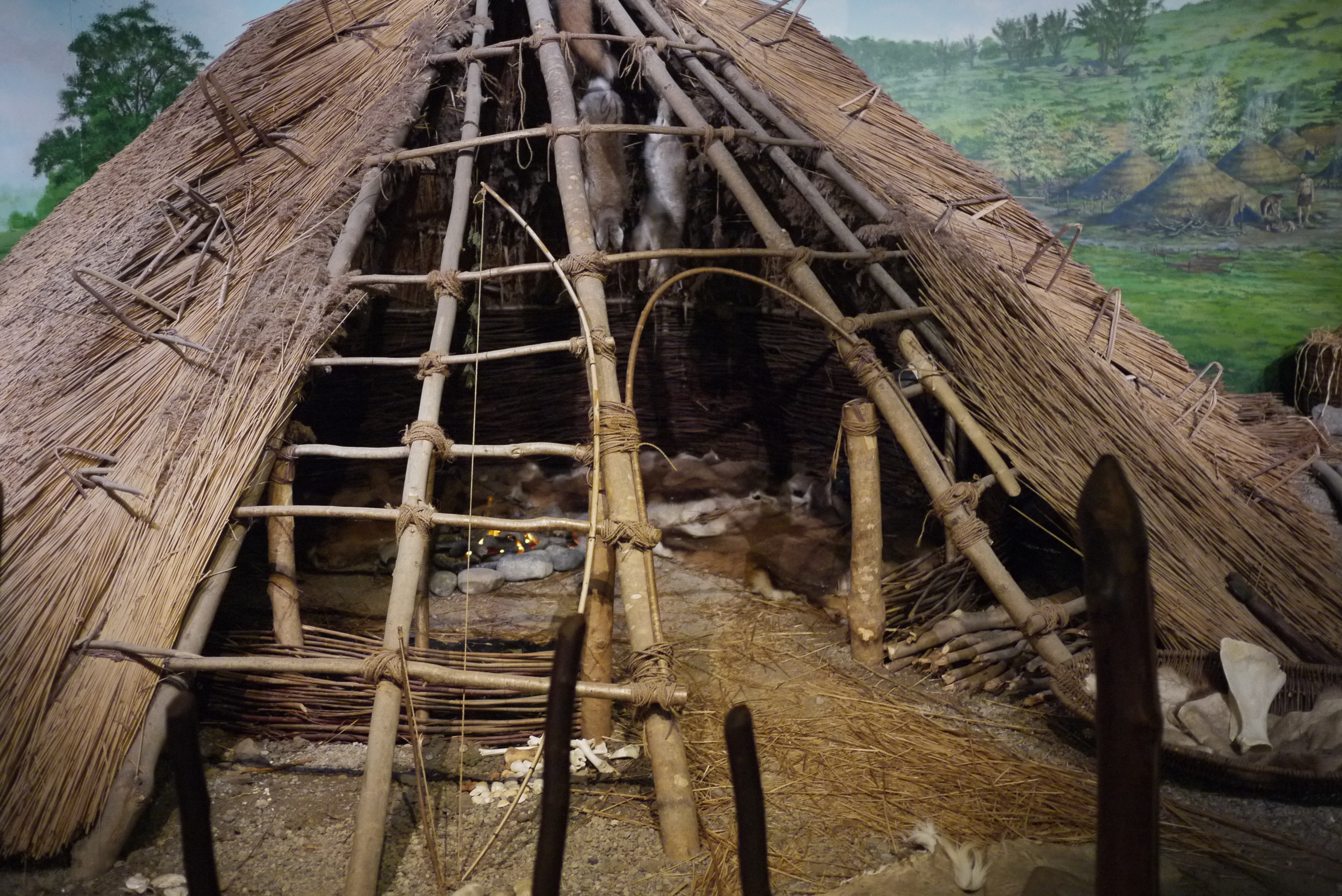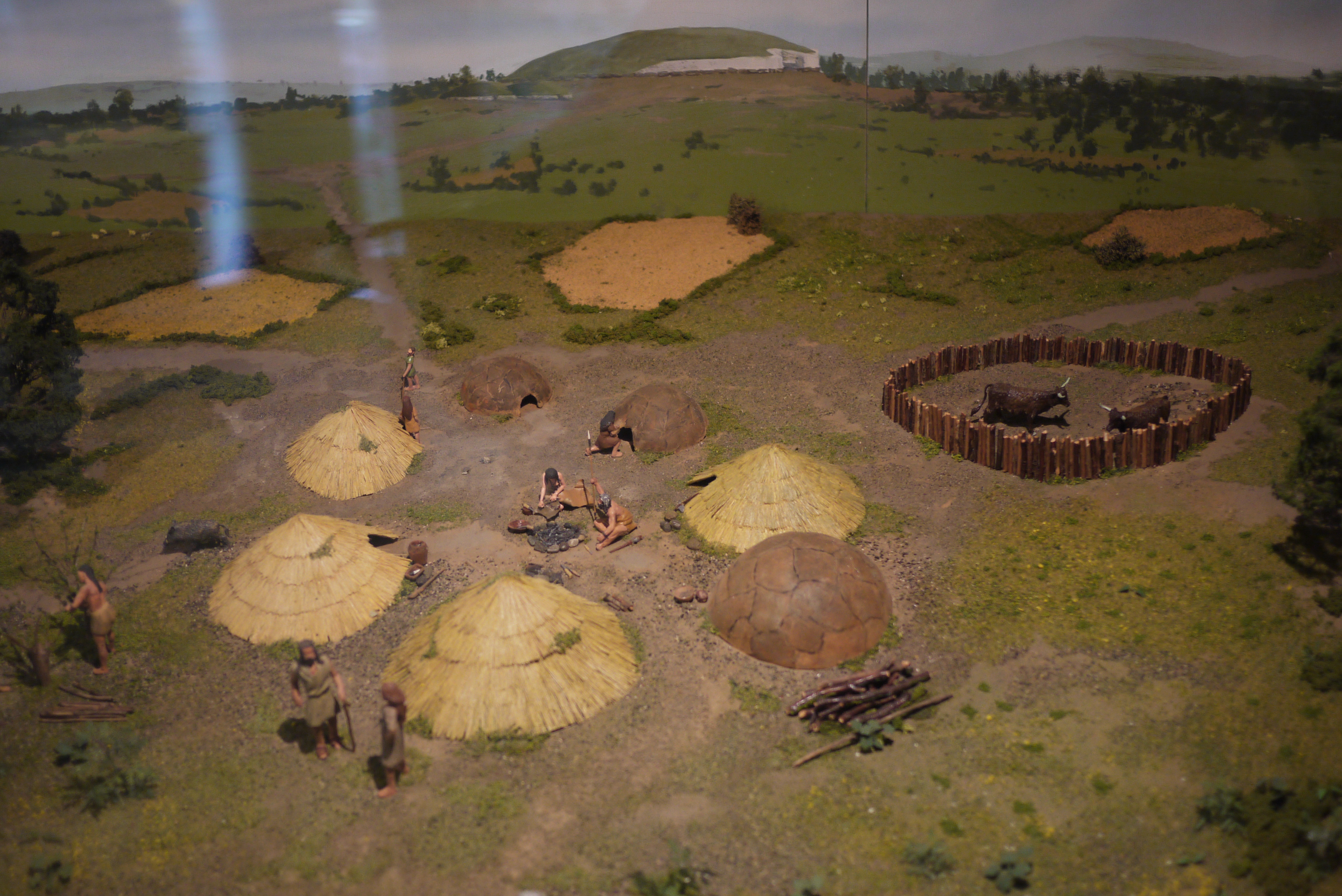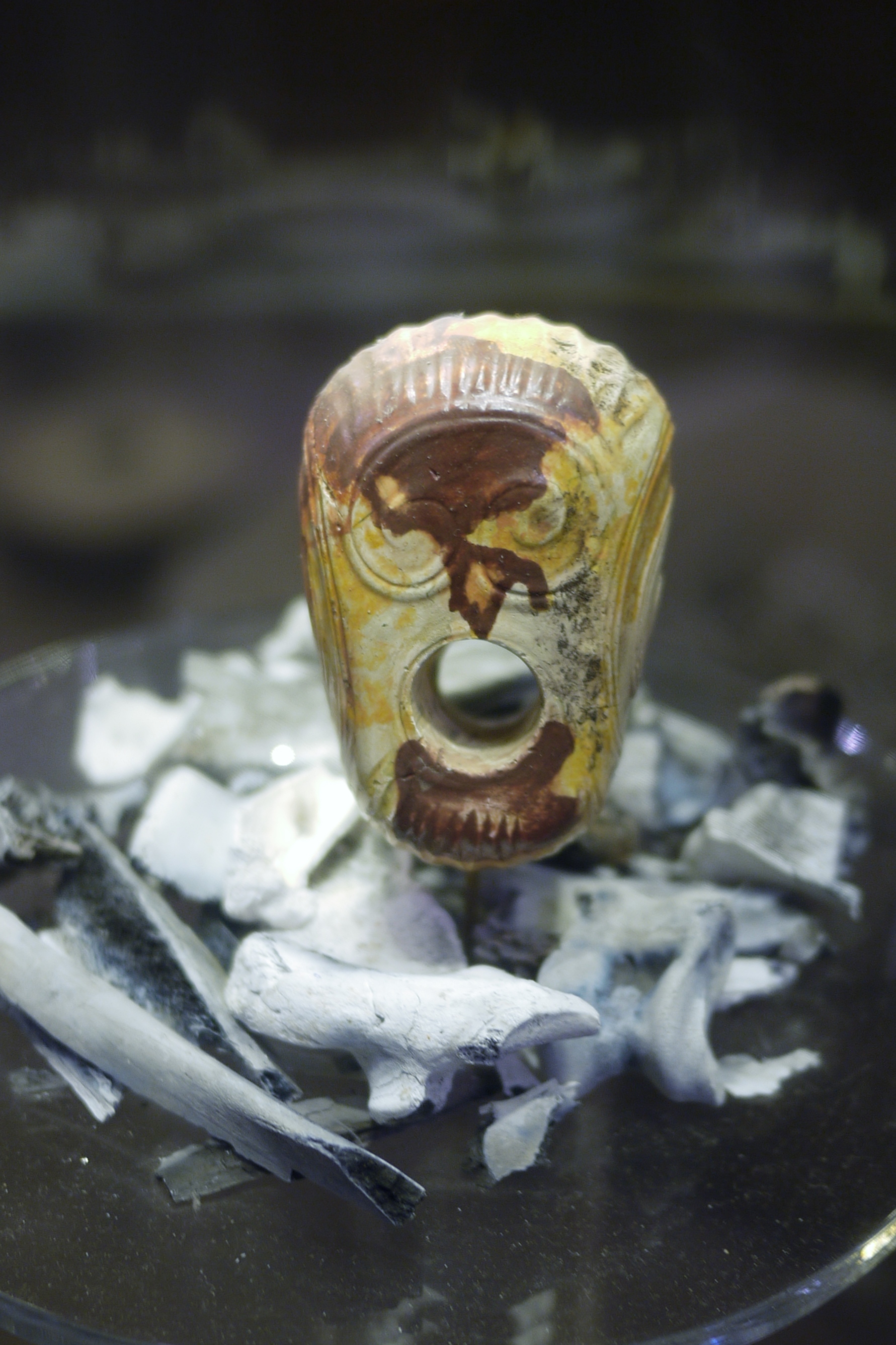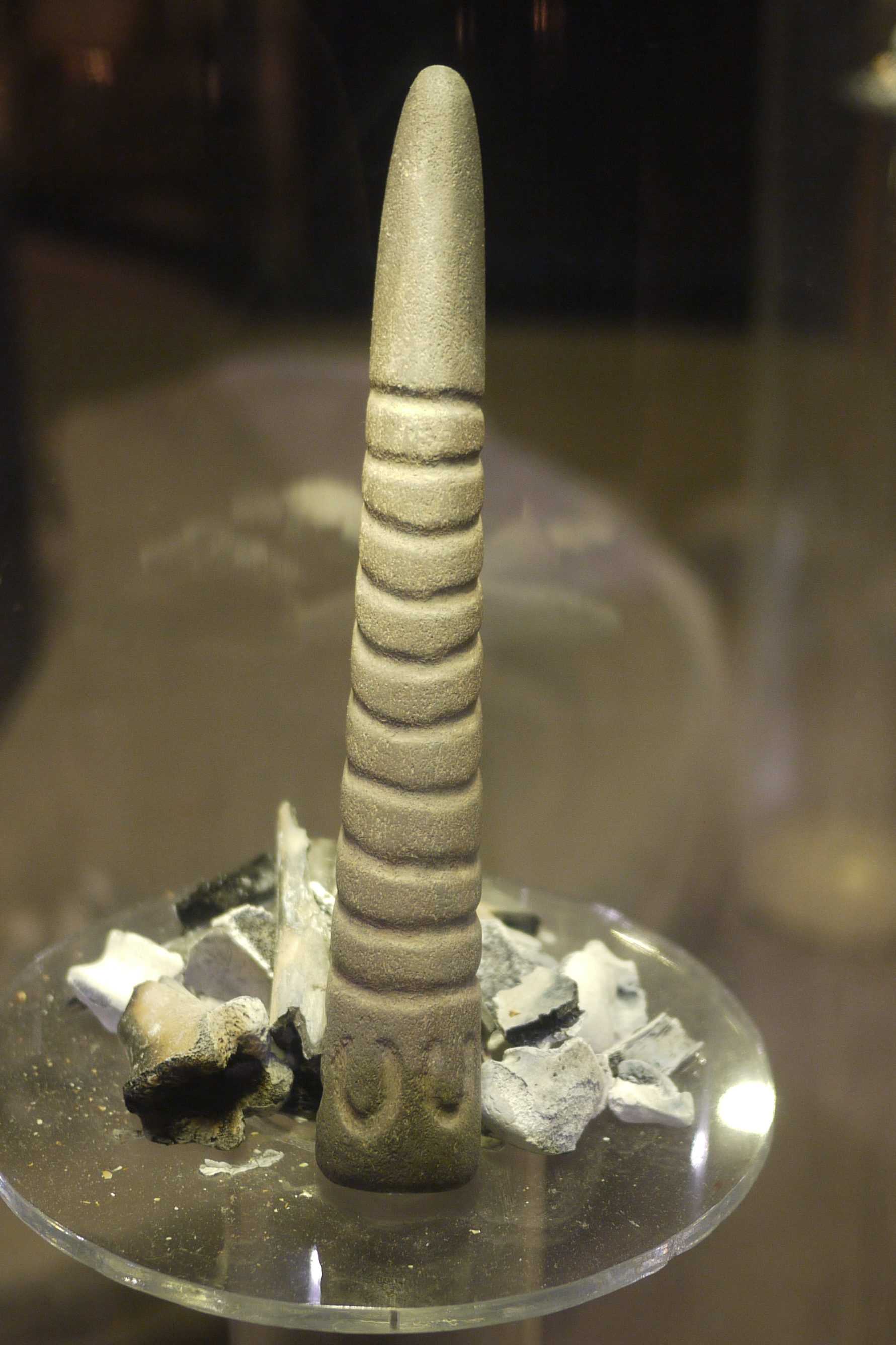If you decide not to take in the sites themselves then the heritage centre gives you a pretty good idea of the background and what the most important bits look like (and there are some things aimed at kids as you go round, so they won't be too bored). There's a reconstruction of a late Neolithic/Early Bronze Age house:
Which I think shows just how much work was done outside. There's not much space to stand up comfortably in the house, especially with the smoke from the fire, so really this is a place to sleep and eat. This kind of house would have been situated in a small settlement, like this (with Newgrange in the distance, there):
The Neolithic is the period when people began to work the land, and moved away from a hunter-gatherer sort of existence. They domesticated grains to grow crops, and domesticated animals to keep herds of meat and milk more handy. This allowed a more more settled existence - they didn't have to keep moving around so much, to follow herds of wild animals for meat, or gather wild fruits as they became available, and so on. This new way of life also meant that new kinds of tools were needed, to help grind the corn, or store it, for example, so this is the kind of background and context that we can consider the huge passage tombs that began to be built in this period. It took serious organisation, effort, and there was inevitably a reason for these passage tombs and the way people were interred inside them, on a religious, symbolic and spiritual level.
There are examples of what people might have worn at the heritage centre:
Although the direct evidence for this clothing is sparse, so take it with a grain of salt, perhaps. This example is based on the kind of tools, like scrapers, that are often found at Neolithic or Bronze Age sites, which tell us that leather was a common material that was used. There are also lots of decorative items, like bone pins and things like that, which would have been used as fasteners for clothes, or as decorative hair pieces.
Here's some pottery, with an example of a friction tool lurking at the back, to help start a fire. It's a rod of wood looped through a piece of sinew that's attached to a "bow," which could be used to spin the rod quickly and cause enough friction to light the kindling pretty quickly and without too much effort:
Some of the pottery here is pretty similar to pottery you find in England from the same period - I couldn't say for sure about Wales or Scotland, off the top of my head, but when I worked for a rescue archaeology unit down in England I saw a lot of this kind of pottery, and there's certainly evidence of contact between England and Ireland at this point in time (like beads and jewellery from the Wessex area, which is a pretty important area at this time period). Just to the left in this picture there's a saddle quern - a large stone with a slight depression in the middle where the grain would be placed, then ground down by rubbing a stone back and forth over it to make a rough flour. It's hard work, and this kind of quern was eventually replaced by the larger "wheel" types, which can grind a bit more grain, and do it quicker.
There are a number of artefacts from the passage tombs on display as well, like this decorated "basin":
The decoration is pretty typical of the period, and a stone like this is often found inside the passage tomb's chamber, set into a recess off to one side. Because most of the tombs have been disturbed by the time archaeologists get to them, it's difficult to know exactly what they were used for, but the general idea is that they held the cremated remains of the people interred into the chamber. Not just the remains of one person, but several mixed together, usually, and sometimes there's evidence of animal bones too. These might have been burned with the individual as they were cremated, or else they might be evidence of ritual feasting at the site.
Around the basin there are some artefacts on display, one of which is a decorated flint mace-head:
The decoration looks like a face - you can see the eyes, the suggestions of hair, a beard, and stylised "ears." Working flint like this - smoothing it, and putting a hole through it so the handle can be slid through it and fixed in place - is a laborious process, and it might have involved the use of a drill that was highly advanced technology for this time period. The flint would have to be worked carefully so as not to crack or break it, and whoever made it would have been extremely skilled.
The mace head was found in the chamber of the main passage tomb at Knowth, and given the amount of disturbance in the tomb - people breaking in to look for goodies over the centuries and millennia - it's a wonder it managed to stay undiscovered until archaeologists got there.
Finally, there's an object on display that's simply described as "phallic," and I'm not sure if this one's from Knowth or Newgrange (examples have been found at both, and elsewhere, though):
One thing to note about this is the "horseshoe" symbols carved at the bottom - these can be seen on a lot of the decorated stone slabs at Knowth, which we'll be looking at next...







No comments:
Post a Comment